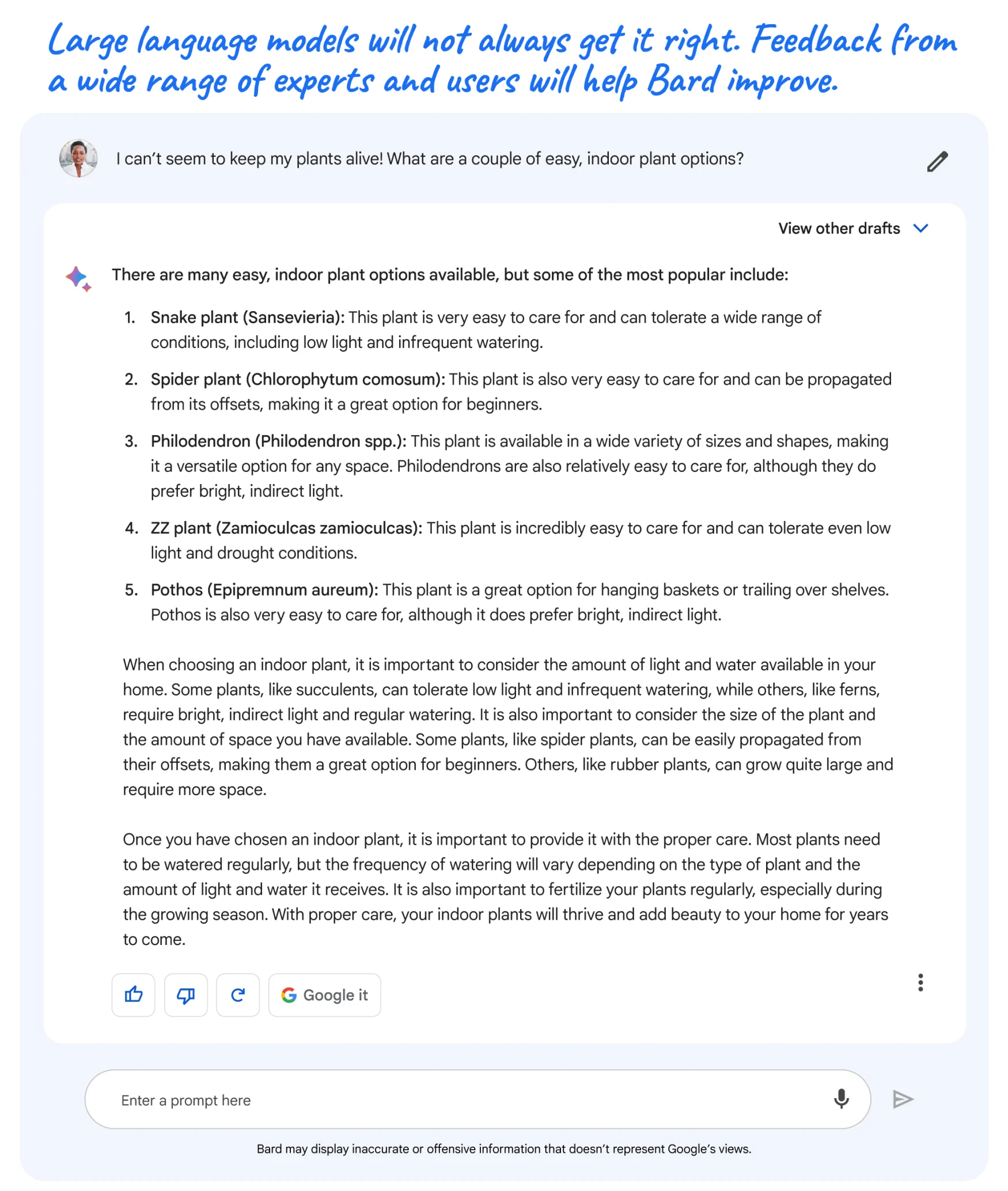Since unveiling its Bard conversational AI in February, Google has been working to improve the chatbot’s responses, after it spouted misinformation in its Twitter debut. More recently, we’ve seen the company add generative AI features to practically its entire suite of services, while access to the Bard chatbot remained exclusive to a few. We saw some Pixel users receive invites to test out Google’s bot yesterday, and today, the company said it’s “starting to open access to Bard.”
In a blog post that “Bard did help us write,” vice president of product Sissie Hsiao and vice president of research Eli Collins invited folks to sign up at bard.google.com. The company said it will begin rolling out access to those in the US and the UK today, and that it’s “expanding over time to more countries and languages.” Opening up access to more people is “the next critical step in improving it,” the pair said, noting that getting feedback from a wider tester base is crucial.
Much like you can with ChatGPT or Microsoft’s Bing AI, you’ll be able to talk to Bard like you would a friend, using natural language instead of a stilted series of keywords. “You might ask Bard to give you tips to reach your goal of reading more books this year, explain quantum physics in simple terms or spark your creativity by outlining a blog post,” Hsiao and Collins wrote.
The pair also said “Bard is a direct interface to an LLM, and we think of it as a complementary experience to Google Search.” Based on screenshots included in the announcement, Bard’s interface looks fairly similar to Bing AI, with a few key differences. At the bottom of each response, Google’s version offers four buttons: thumbs up, thumbs down, a refresh arrow and a button saying “Google it.” There’s also an option at the top right of the response that says “View other drafts.” Bing AI doesn’t have these, instead using the space below each response as an area for source citations.
While Bing AI runs on OpenAI’s GPT-4, Bard is powered by “a lightweight and optimized version” of Google’s LaMDA, and the company said it “will be updated with newer, more capable models over time.” At its last I/O developer conference, Google showed off an AI Test Kitchen app for people to interact with LaMDA 2, which it also unveiled then.
The input bar at the bottom of the screen also has a couple of differences. Bard has a microphone symbol at the end, indicating speech-to-text might be supported, while Bing doesn’t. Meanwhile, Microsoft’s offering has a broom icon on the left of the text input bar to clean the slate when you want to start on a new topic. Google’s doesn’t. It’s also worth noting that below Bard’s text field is a line of fine print that reads “Bard may display inaccurate or offensive information that doesn’t represent Google’s views.”
In its announcement, Google was careful to acknowledge that large language models (LLMs) like LaMDA aren’t perfect and that mistakes happen. “For instance, because they learn from a wide range of information that reflects real-world biases and stereotypes, those sometimes show up in their outputs,” Hsiao and Collins wrote.
They even shared an example of where Bard has gone wrong before. “When asked to share a couple suggestions for easy indoor plants, Bard convincingly presented ideas…but it got some things wrong, like the scientific name for the ZZ plant.”
Google said that it’s important to know such challenges exist, and noted that quality and safety are significant issues to consider. “We’ve also built in guardrails, like capping the number of exchanges in a dialogue, to try to keep interactions helpful and on topic,” Hsiao and Collins wrote. It’s not yet clear what the limit on the number of exchanges in a dialogue is, though, and we’ve asked Google for clarification and will update this post when we hear back.
In spite of all its potential limits and possibility for error, Google still believes Bard is worth the work, adding that it will “continue to improve Bard and add capabilities, including coding, more languages and multimodal experiences.” Hsiao and Collins said that Bard’s help in writing the announcement post involved creating an outline and suggesting edits. “It didn’t always get things right,” they said. “But even then, it made us laugh.”
Credit: Source link




